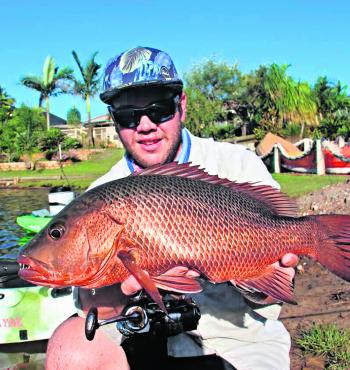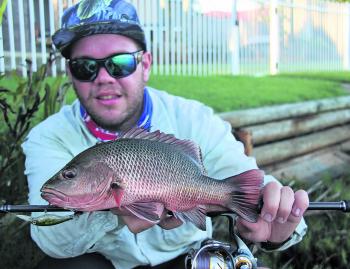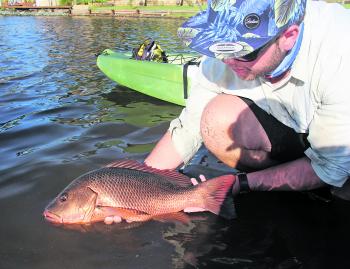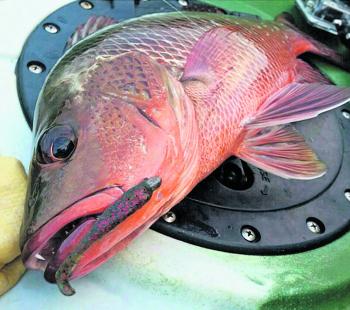Every year as summer approaches and temperatures soar into the high 30s, many anglers turn their attention to mangrove jack.
If you have ever had the opportunity to land one of these beasts, then you will know why the addiction is overpowering.
Last year, my good mate Josh and I set a goal to chase mangrove jack from a kayak, and while this may sound like an impossible task, the kayak provided great advantages like stealth and access to areas that boats couldn’t.
We chose to target the tight areas on the Gold Coast, of which there are many.
As always, we carefully studied Google Earth, looked through the myriad of little canals with likely jack holding structure and a suitable launch spot for the kayaks. There are literally so many places you can sneak a kayak into once you start to study Google Earth and this had us keen to explore. We would load up either early morning or mid-afternoon and focus our sessions around these times of day.
We took a completely different approach to conventional jack fishing and scaled back our gear. Most of the areas we fished were heavily pressured by either land-based, boat or paddle craft and the resident jacks had no doubt seen plenty of lures come past their homes, so by changing our approach from the norm, we hoped to unlock a few jacks.
We found that early morning sessions were time for topwater lures, and this saw us bringing out the small walkers and poppers and working them tight against any rock wall, pontoon or mangroves. While doing this, it’s a good idea to keep a close eye for any surface bust ups or bait movement.
Once this window closes, we fished light spin outfits with 10-12lb leaders working small plastics, mainly paddle-tail minnows and grubs from 2.5-3” on lightly-weighted jigheads. We like to cast these parallel along rock walls and work them back to the kayak with a slow roll retrieve. If this slow roll retrieve fails to entice a bite, you can let the plastics sink a little deeper and work it with short erratic hops along the structure or bottom.
Another technique that has proved successful is casting small hardbodies from 45-60mm in length, most of these were deep divers getting down to depths of 2-2.5m. Prime positioning of the kayak is vital to ensure you have these lures running as close as possible to pontoon edges, moored boats and rock walls.
For us, the challenge was always going to be extracting the bigger fish once hooked on relatively light gear, and having a paddle style kayak isn’t going to be in your favour. It’s a classic case of ‘you win some, you lose some’, but that goes for all jack fishing. We have, however, adapted a few techniques that we use to extract big snapper from shallow reefs and used these with some success on the jacks.
Last season ended fairly well for us, and saw a few mangrove jack slide into the net and a couple more steam train us into the nearest structure. As usual, there was always the by-catch of cod, bream and trevally to keep us alert waiting for that next jack strike.
So next time you’re thinking of heading somewhere new, why not explore the huge network of waterways on the Gold Coast and hit some artificial structure in search of the mighty mangrove jack. By squeezing up where boats can’t, you’ll be in with a chance of hooking into a red devil.
Reads: 2581
When fishing the Gold Coast, it’s normal to be fishing right in the middle of suburbia.

Hardbodies are a great way to probe man-made structure.

Mangrove jacks are such a valuable part of the Gold Coast’s fishery, so most choose to release 99% of their catch.

Paddle-tail plastics are a tried and tested method of tangling with Gold Coast jacks.

Josh King with an absolute screamer of a Gold Coast jack.




